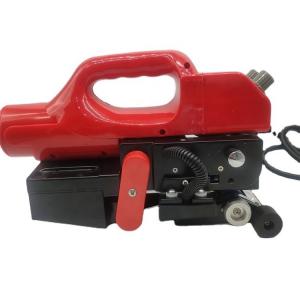Since the quality of welding in the machine is directly related to the working speed and temperature control, to achieve high quality welding, you need to hire professionals. 1. The user must select the back thread and three sockets with a current of at least 10A, and ensure that the connection is made from the outside (connection line L in the corresponding welding machine, neutral line N, ground protection line L), press the machine support to disconnect the chuck and adjust the switch. 2. Temperature, turn on the power switch, there must be a choice and speed, and welding pressing, due to the temperature difference, material thickness, for each of the two cases, different welding to choose the same material temperature, in proportion to the rate (about centrifuge/minute), the temperature will choose high to low (about 250°C-350°C) slowly level, to better identify the welding effect. 3. Temperature welding, beige transparent material, can be directly seen, with welded joints and transparent leveling glass, the surface heat speed is fast, welding is seriously damaged, where the overheating increases or is slow, such as transparent welding does not turn white, indicating low temperature or fast speed, opaque material to see if there are welding traces. It can also be used for tensile test after full cooling 4. The edges of the welding material are attached to the front and woven in the lower left and upper right corners. 5. After setting the temperature and speed between the pistons, the welding material is introduced to make the hull parallel to the edge of the mother village, and the pressure rod support can be welded, and the operator usually needs to monitor whether the welding marks deviate from the edge of the material and timely small-scale correction. 6. When welding the material to the end, press the handle at the right moment to separate the top and bottom of the wheel. So it won't last very long 7. Due to thermal inertia, if the temperature is too high or too low during welding, the speed can be adjusted on a small scale to compensate for the temperature deviation. 8. Weld with another material in the form of "T" welding (FIG. 3), the weld is cut with a hot knife about 150 mm long near the weld mark.












